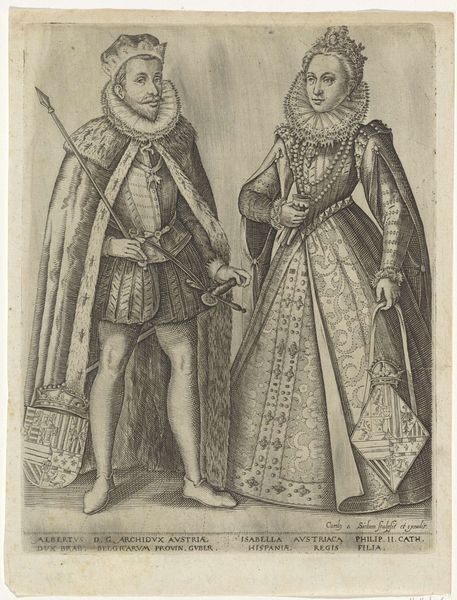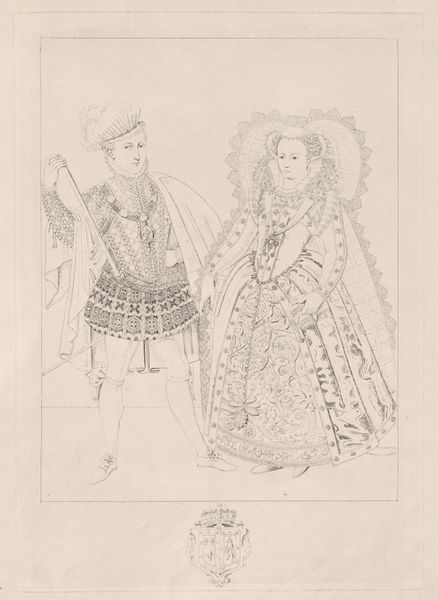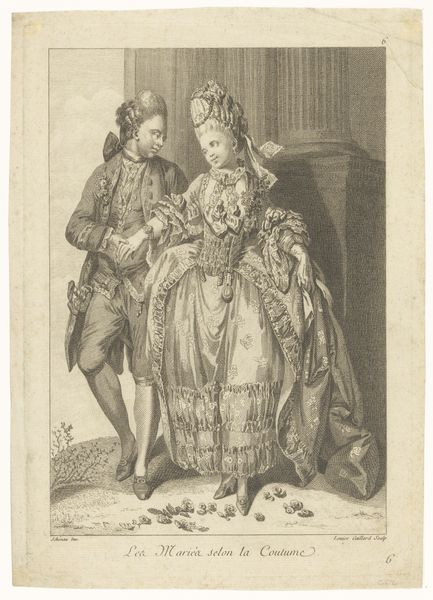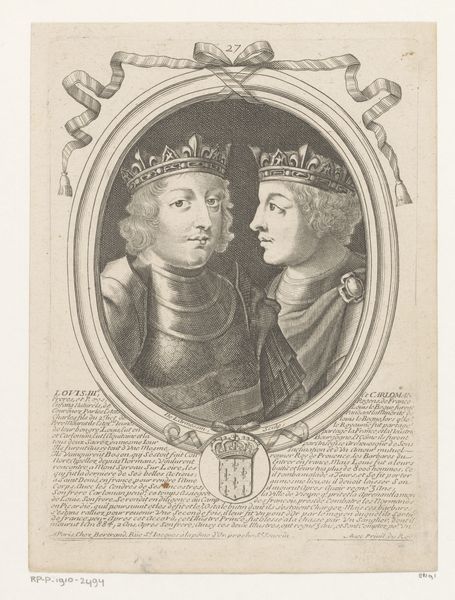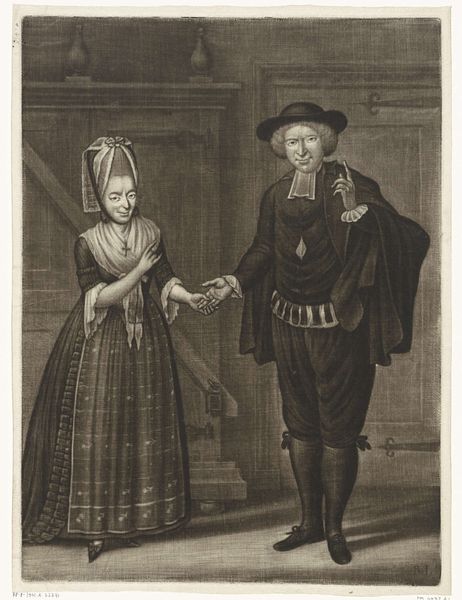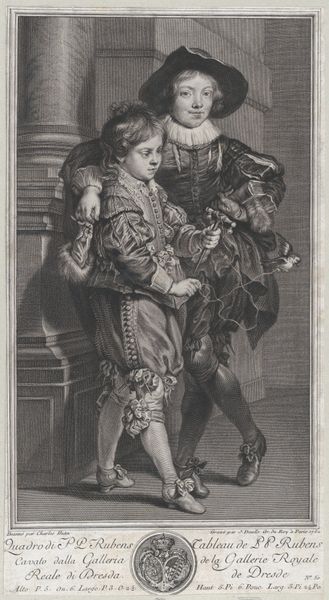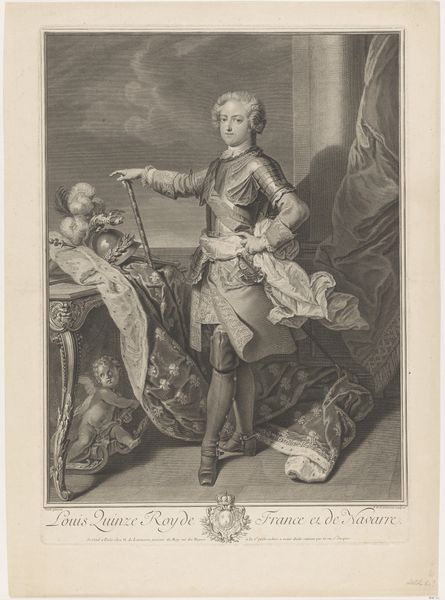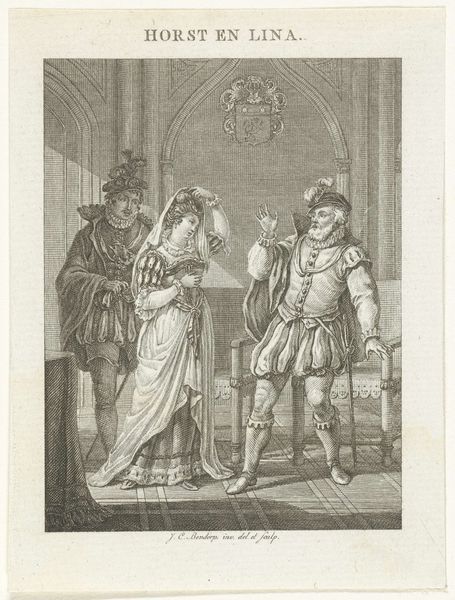
drawing, print, intaglio, engraving
#
portrait
#
drawing
#
medieval
# print
#
intaglio
#
figuration
#
historical fashion
#
england
#
romanticism
#
men
#
line
#
history-painting
#
academic-art
#
engraving
Dimensions: Plate: 14 3/4 × 10 3/8 in. (37.4 × 26.4 cm) Sheet: 19 3/8 × 14 5/16 in. (49.2 × 36.4 cm)
Copyright: Public Domain
Curator: Ah, here we have Robert Dunkarton's print, “Mary, Queen of Scots and Lord Darnley," dating from 1811 to 1821, now residing here at the Met. The way the light catches their faces, it's almost like looking into a faded mirror reflecting a tumultuous past. Editor: The first thing that strikes me is how labor-intensive creating this intaglio print must have been. Look at all that meticulous cross-hatching! It feels so at odds with the volatility of the historical figures depicted. Curator: Exactly! And Dunkarton captures that volatility perfectly. The piece echoes a bittersweet drama, right? I can't help but see a visual prelude to their tragic downfall, a sort of ghostly foreshadowing rendered with academic precision. Their relationship, a dance of ambition and desire. Editor: It’s the very *stuff* of courtly ambition rendered materially—etching by etching. Notice how their garments become intricate, patterned landscapes. How does the decision to flatten them through engraving affects your reading of the characters? Curator: A curious choice indeed. It softens them, making them appear more as romantic ideals rather than the political firebrands they were. There's something melancholic about it, isn’t there? It invites a softer consideration of two controversial historical characters that, ironically, would’ve never considered such artistic compromise during their lives. It almost renders their tumultuous existences to a sentimental parlor ballad. Editor: Sentimental, yes, but look closely. Each carefully etched line reveals a considered assessment about status, and reveals just how effectively these rulers utilized dress and design to broadcast and maintain power. The details are more about political economy and craft, actually, because these images themselves would have then circulated to *reinforce* those visual hierarchies, that sense of a distinct nobility! Curator: Oh, undeniably! It speaks volumes about the machinery of power at the time and perhaps even suggests the romantic revisionism favored during the late Georgian era, no? One where queens are rendered with grace, despite their faults, like echoes in grand hallways. Editor: A lot of sweat went into constructing these fictions and reinforcing them over time, though. The print acts almost as a record—testimony of that relentless work! Curator: And ultimately, an emblem of human fate, immortalized in ink. It leaves you with the distinct impression that even royalty cannot outrun history's harsh brushstrokes. Editor: Indeed, even queens are consumed and reproduced into a material record shaped by power and capital.
Comments
No comments
Be the first to comment and join the conversation on the ultimate creative platform.

